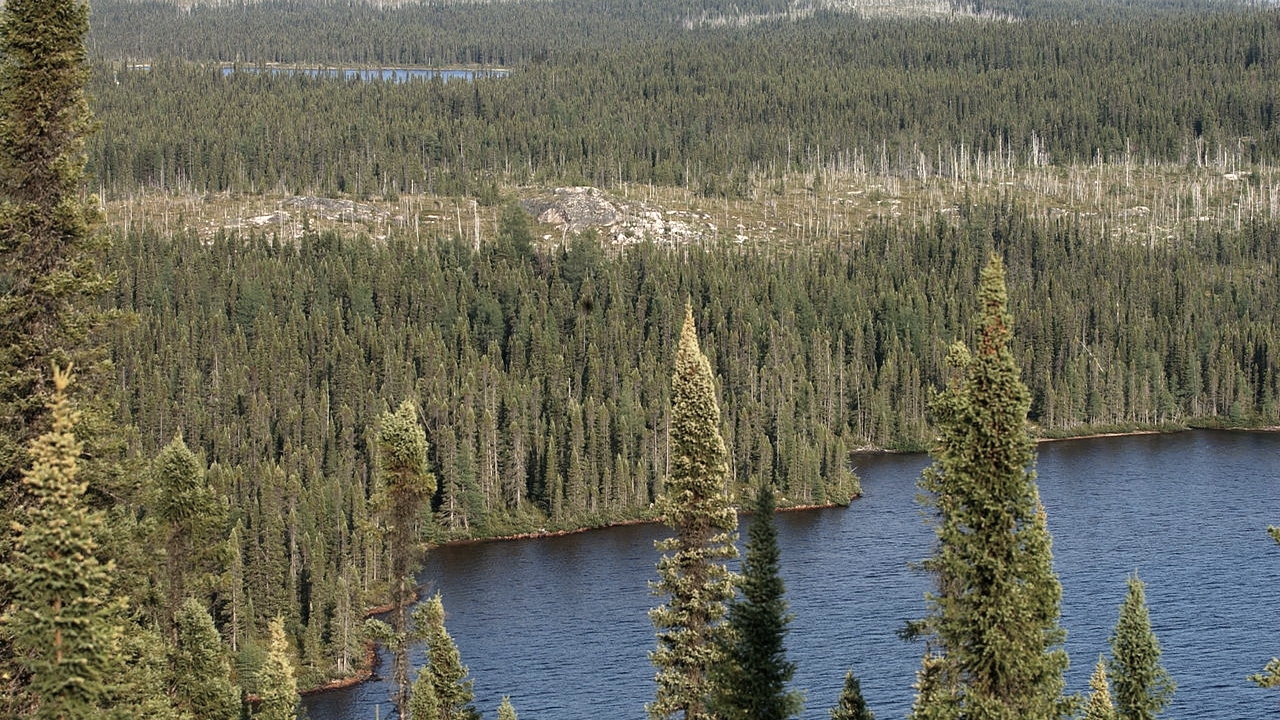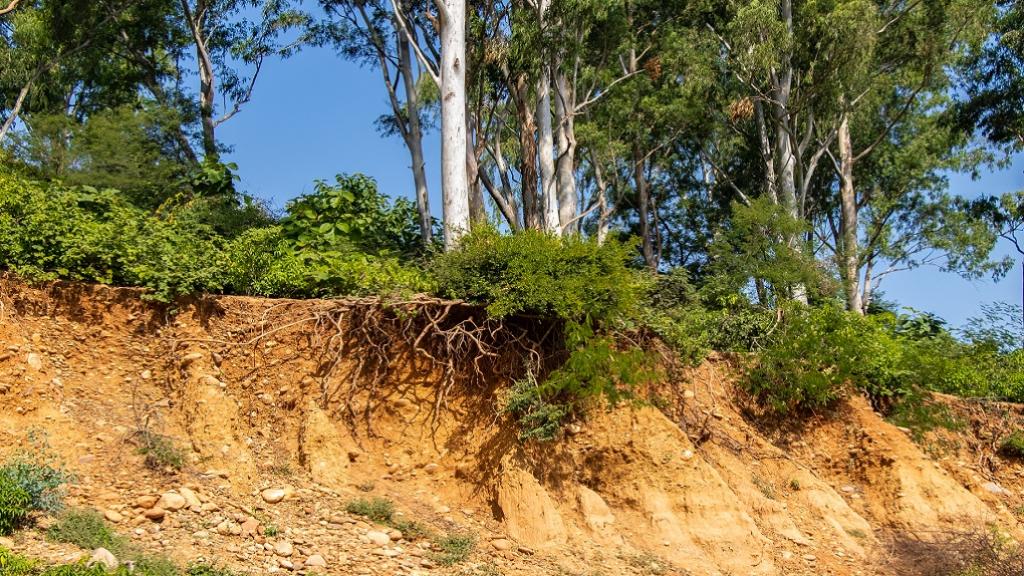Sustainable Use Of Forest Resources - Topic 4: Geography Notes Form Two
TOPIC 4: SUSTAINABLE USE OF FOREST RESOURCES - GEOGRAPHY NOTES FORM 2
Forest refers to an extensive area of land which is mostly covered by trees of different sizes and species. Or a forest is a dense growth of trees, plants and undergrowth covering a large area of land. Forests can be natural or man-made (planted)/ Artificial forest
Importance of forests
i) Forests prevent soil erosion; Trees and grasses preventing movement of agents of erosion like water winds and moving ice.
ii) They maintain water sources like rivers, catchment areas, springs and lakes. This is due to the fact that forest support rain formation.
iii) Forests are also used for scientific studies (research).
iv) Where there is a variety of trees, tourism can develop because of scenic beauty. Hence the country can gain foreign money.
v) Forests provide habitats for animals and birds of different varieties.
vi) Forests contribute to the modification of the climate especially through rain formation and moisture conservation.
vii) Forests also introduce oxygen in the environment which is produced during photosynthesis. In this process the trees clean the air by absorbing carbon dioxide. Carbon dioxide is the raw material used during photosynthesis.
vii) Trees are also a source of fuel energy since they are used for firewood and charcoal making.
viii) Forests also provide raw materials for paper and pulp industries from which writing materials are produced.
ix) They provide building material like poles and timber.
x) Some tree species are used for making medicine and also provide fruits as well as ornamental flowers.
xi) Forests contribute to soil development through rotting of leaves which lead to formation of humus. Humus is very important in plant growth.
TYPES OF FORESTS
There are two broad types of forests: Natural forests and planted (artificial) forests. Natural forests is the type of forest that develop naturally without intervention of man while planted forests are planted and cared for by man. Distribution of Forests by Type
Due to factors such as climate and tree species, natural forests can further be subdivided into the following broad categories.
1. Tropical rainforests:
They are found around the equator, between 23.5°N and 23.5°S. Trees in the tropical rainforests are tall and often take a very long time to mature.
They consist of indigenous trees which are typically broad-leaved, and they contain thick under growths of shrubs and other vegetation.
2. Temperate forests:
These forests occur in the mid latitudes of both hemispheres. There are four distinct seasons in temperate deciduous forests and precipitation falls throughout the year, as rain in the spring, summer and fall and snow in the winter.
The forest floor in temperate forests supports mosses, ferns and wild flowers. Maple, oak and birch trees are some examples of the deciduous trees that dominate these forests. There are also small numbers of evergreen trees such as pines and fir.

3. Coniferous forests:
Coniferous forests are typically found in coastal areas with mild winters and heavy rainfall or in in-land mountainous areas with mild climates with temperature that fluctuates little throughout the year. Evergreen conifers dominate these forests.
They are characterized by evergreen, need-leaved trees, with little undergrowth and tall trees which take very long time to mature. Dominant tree species found in coniferous forests include cedar, cypress, Douglas fir, pine, spruce and redwood.
Some deciduous trees such as maple, and mosses and ferns are common in coniferous forests.

4. Boreal (taiga) forests:
These are the northernmost forest type and are found between 50°N and 60°N. Boreal forests are characterized by long winters and short summers.
Most precipitation is in the form of snow. Trees are mostly evergreen and include species such as spruce, fir and pine. Factors for Distribution of Forests Forest distributions are affected by a number of factors which include the following:
Factors for Distribution of Forests Forest distributions are affected by a number of factors which include the following:
1. Soil:
Different types of soil offer various types of vegetation. For example, a damp and marshy soil will favour growth of types of trees such as mangroves, which are generally found on the coastal areas of the tropics or subtropics.
On the other hand, sandy soils located in dry desert areas will support prickly bushes and cactus where the aim of the plant is to conserve water.
2. Rainfall:
Water is an essential component of all living organisms. Trees need water for various physiological functions such as photosynthesis and cooling.
Hence, it is essential for growth and development of any particular vegetation. Forests thrive well in areas that receive sufficient rainfall which is evenly distributed throughout the year.
3. Temperature:
The warm and wet equatorial climate supports the growth of mainly huge, tall, deciduous trees. The cooler temperate climate supports needle-leaved trees which are adapted to that particular climate.
The moderately hot tropical climate supports a variety of softwood and hardwood trees which thrive best in the tropics.
4. Relief:
Relief refers to variation in altitude in an area. Differences in altitude along the slope of a mountain bring about differences in the type of forests along a mountain slope. For example, you will always find dense forests on the foot of Mount Kilimanjaro. As you move up from the foot of the mountain, the vegetation type and density changes gradually.
At a height ranging between 1800 and 2800 m, there is the tropical rainforest, followed by the temperate forest at around 4000 m. Between 3000 and 3500 m, the forest is dominated by scanty vegetation, with patches of a bamboo forest.
5. Aspect:
In physical geography, aspect generally refers to the horizontal direction to which a mountain slope faces. The slope of a mountain facing the direction of prevailing winds (windward side) will always receive higher amounts of rainfall than the slope facing the opposite side (leeward side).
For this reason, dense forests will always grow on the windward side, due to abundant rainfall, while the leeward side will consist of scanty and poor vegetation.
6. Drainage:
If the soil has too much water, plants cannot get enough oxygen from the soil. This will affect root respiration and the plants may eventually die. On the other hand, plants cannot grow well if they do not have healthy roots for absorbing water from the soil.
So, the proper balance of plant health, water and air is necessary for maximum plant growth and development. Well drained soils support growth of a variety of big trees compared to water-logged and swampy lowland. However, few plants such as mangrove can thrive in shallow sea shores which are more or less permanently covered by water.
7. Human activities:
Human activities such as clearing the vegetation to get land for agriculture or settlement greatly affect the distribution of forests. Most of the natural forests of the world have been cleared by man. In some parts man has planted forests (artificial forests) on bare lands or in place of natural forests.
Types of forest resources
1) Timber For making furniture and constructional works or match making for pit pups and making of wood pulp for manufacturing new prints and crayon.
In Brazil 30% of timber is used mainly for furniture, harbor piles and clock gates, boat building and tanning extractions, 70% is used for fuel

3) Fiber materials For different uses such as shifting for upholstery cushions etc
4) Oil from nuts Can be processed for vegetable oil
5) Fruits and flowers For human and animal consumptions
6) Medical plants Including the castor oil plant, salsa parilla, cinchona which are used for making genuine Ways of obtaining forest resource Forest resources can be obtained in controlled or uncontrolled method.
Uncontrolled method; Plant cover is removed over an extensive area and leave the land open unreliable to erosion agents i.e. using fires, shifting cultivation, deforestation.
Controlled method; Are governed by government directions which discourage the use of fire and encourage sustainable development of forests for the benefits of the people and the creatures that inhabit such places. They include reforestation i.e planting trees to replace harvested forest resources.
Problems arising from exploitation of forest resources
Over exploitation of forest resources can cause the following environmental problems;
i) Increase in soil erosion; As the rain drops /falls harshly in the exposed soil and remove the fertile soil.

iii) Destruction of animal habitat.
iv) Accelerated desertification. This caused by prolonged drought of an area since the absence of forest affect rain formation.
v) Pollution of the atmosphere which can lead to greenhouse effect and global warming i.e. when forests are cleared by burning adding carbon dioxide in the atmosphere.
vi) Disappearance of some species of trees (loss of biodiversity).
vii) Unreliable rainfall due to the excessive evaporation
Forest conservation measures
i) Planting trees where other trees have been cut (reforestation) and planting trees where there never existed any tree before (afforestation). Setting aside some areas and declaring them as protected areas.
ii) Educating people on the importance of conserving the forest and persuading them to fully participate in all activities involving forest conservation. Also there should be clear policies giving directions on the proper use of the forest resources.
iii) There should be alternative energy resources used instead of depending on the trees. For example Solar energy, Geothermal power, bio-gas and HEP
iv) There should be careful land use planning in order to avoid destruction of trees. Population control should be encouraged in the countries so as to reduce pressure on the forest resources and the land in general.
v) Agricultural methods should be improved so as to encourage proper land use methods like shifting cultivation should be discouraged.
vi) Destocking (reducing the number of animals) should be encouraged among the pastoralists, because having too many animal leads to the destruction of vegetation.
vii) New and fast growing trees should be introduced. Agro-forestry means the practice of inter cropping trees and crops in the same farm. Trees can be inter-cropped with crops like beans, bananas etc.
Advantages of inter cropping the trees with crops (Agro-forestry)

ii) A farmer gets a variety of profits from the same farm. That is forest products and crop products.
iii) Family members get firewood from around homestead without traveling very far in search for firewood.
iv) Trees provide shades to other plants on farm land.
v) The rotten trees add nutrients to the soil hence soil fertility.
Disadvantages related to Agro-forestry
i) When large trees are inter-cropped the annual crops tend to suffer leading to decline in production. This is so because the large trees tend to take up most of the moisture, nutrients and block the light from reaching the annual crops.
ii) Some trees are harmful to crops since they produce poisonous substances.
iii) Mechanization cannot be easily done because of the trees. Examples of areas with timber industry are:-
Sweden Canada And some parts of Japan where coniferous trees provide most of the forest resources. 60% of Canada is covered by forests and the major species are Oak, Chestnut, Spruce, and Pines
Factors which have led the development of the timber industry
1) Low temperature discourage settlement hence leave room for trees
2) Enough rainfall leads to the growth of the coniferous forests
3) Availability of capital
4) Cheap means of transport
5) Sound forest management strategies
Factors which have led to the development of the timber industry in Gabon
i) Availability of many tree species.
ii) Availability of rivers like Ogowe facilitates the transportation of the timber products.
iii) Large foreign companies which were given concession to exploit the forests have capital.
iv) Constant market for timber products.

